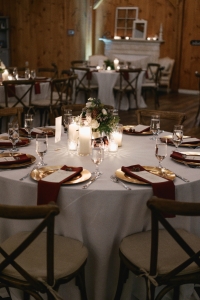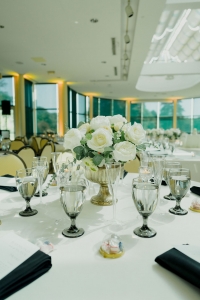Everything You Need to Know About Wedding Seating Charts
Creating a thoughtful seating chart might not be the flashiest part of wedding planning, but it’s one of the most impactful. At Pride in Planning, we know that a well-executed seating chart can completely transform the guest experience, meaning smooth logistics for your vendors and intention around your guest experience. Whether you’re hosting a black-tie celebration or an intimate backyard ceremony, knowing how to approach your seating strategy will make all the difference.
Why Are Seating Charts Important?
At first glance, skipping the seating chart might seem like a way to make things simpler. But in reality, an intentional seating plan makes your entire event flow more smoothly. One of the most practical benefits is that it prevents the chaotic scramble of guests trying to find a place to sit! If you have ever been in this situation as a guest, you know how awkward it can be. From a vendor standpoint, it ensures your reception starts on time and keeps the energy positive and organized.
Seating charts are crucial when it comes to food service, especially if you’re offering a plated meal with different entrée options. Assigning seats allows caterers to know exactly where each dish needs to go, cutting down on delays and confusion. From a guest experience perspective, assigning seats or tables gives you the opportunity to be strategic- keeping certain guests apart, placing people with common interests together, or making sure that no one is left awkwardly sitting alone. Ultimately, seating charts give you control over the atmosphere you want to create.
Types of Seating Arrangements
There are a few different ways to approach your seating chart, and each comes with its own vibe and level of structure.
Assigned Seats
The most formal option is assigning guests to specific seats at specific tables. This is especially popular for black-tie weddings or events with plated dinners, as it gives the most control and clarity. Assigned seating ensures that every guest knows exactly where to go, and it allows vendors—like your caterer or photographer—to plan more precisely. That said, it does require more planning and coordination on your part. You’ll need a final guest list, confirmed RSVPs, and a strong understanding of your table layout to pull it off smoothly.
Assigned Tables
If you want to strike a balance between structure and flexibility, assigning tables (but not individual seats) is a great middle ground. In this scenario, guests are told which table they’re seated at, but they get to choose their own seat once they arrive. It’s easier to plan than full seat assignments and still avoids the stress of open seating. This approach is great for semi-formal weddings or when you want to maintain some control while keeping things relaxed.
Open Seating
For very casual or small weddings, open seating is an option. Guests are free to choose their tables and seats on a first-come, first-served basis. This can work beautifully in a backyard setting or at a cocktail-style reception, but it comes with its own challenges. Without guidance, guests may hesitate, wander, or separate from their groups. It also risks leaving some tables half-full while others get overcrowded. If you go this route, be sure to have enough seating and make your layout as intuitive as possible.
Assigned Seats vs. Assigned Tables: The Pros and Cons
When it comes to assigned seats vs. assigned tables, the decision often depends on the formality of your event, your guest dynamics, and how much effort you’re able to put into planning.
Assigned seating offers the highest level of control. It allows for exact meal placement, strategic seating arrangements, and a streamlined guest experience. It’s particularly useful for large guest lists, events with VIPs, or weddings where family dynamics require some diplomacy. However, it also involves more detailed planning and can be limiting for guests who prefer some flexibility.
Assigned tables, on the other hand, offer a more relaxed experience while still guiding guests to their general location. It’s less time-intensive to plan and still avoids the free-for-all chaos of open seating. This method works well for weddings that are elegant but not overly formal, and for couples who want structure without micromanaging every detail.
Tools That Help: Escort Cards, Seating Charts & Place Cards
No matter which option you choose, communication is key. Escort cards and seating charts are common tools that help guests find their spot. Escort cards typically display a guest’s name and table number and are arranged alphabetically on a table or board. They’re great for assigned table setups and can be styled to match your overall wedding aesthetic.
For assigned seating, you’ll also need place cards at each setting. These show each guest exactly where to sit and are often placed on top of napkins or plates. A large seating chart (displayed at the entrance of your reception space) can also be used in place of individual escort cards, especially if you’re working with assigned tables. These charts are not only functional—they’re also a chance to get creative and add a stylish design element to your event.
Final Thoughts
Seating charts might not be glamorous, but they’re essential for a stress-free, well-run wedding day. They help your vendors do their jobs better, make your guests feel cared for, and contribute to the overall atmosphere of your reception. Whether you choose to assign tables, assign seats, or keep it casual with open seating, the key is to be thoughtful, intentional, and clear in your communication. And if you’re feeling overwhelmed, we at Pride in Planning are here to guide you every step of the way.



